聚类--K均值算法:自主实现与sklearn.cluster.KMeans调用
Posted cx1234
tags:
篇首语:本文由小常识网(cha138.com)小编为大家整理,主要介绍了聚类--K均值算法:自主实现与sklearn.cluster.KMeans调用相关的知识,希望对你有一定的参考价值。
1.K-means是一个反复迭代的过程,算法分为四个步骤:
(1)选取数据空间中的K个对象作为初始中心,每个对象代表一个聚类中心;
(2)对于样本中的数据对象,根据它们与这些聚类中心的欧氏距离,按距离最近的准则将它们分到距离它们最近的聚类中心(最相似)所对应的类;
(3)更新聚类中心:将每个类别中所有对象所对应的均值作为该类别的聚类中心,计算目标函数的值;
(4)判断聚类中心和目标函数的值是否发生改变,若不变,则输出结果,若改变,则返回2)。
import numpy as np x=np.random.randint(1,100,[20,1]) y=np.zeros(20) k=3 #初始聚类中心数组 def initcenter(x,k): return x[:k].reshape(k) #数组中的值,与聚类中心最新距离所在类别的索引号 def nearest(kc,i): d = (abs(kc - i)) w = np.where(d == np.min(d)) return w[0][0] #对数组的每个组分类 def xclassify(x,y,kc): for i in range(x.shape[0]): y[i]=nearest(kc,x[i]) return y kc=initcenter(x,k) y=xclassify(x,y,kc) print(kc,y) #计算各聚类新均值 def kcmean(x,y,kc,k): l = list(kc) flag = False for c in range(k): m = np.where(y == c) n=np.mean(x[m]) if m[0].shape != (0,): n = np.mean(x[m]) if l[c] != n: l[c] = n flag = True return (np.array(l),flag) k = 3 kc = initcenter(x,k) flag = True print(x,y,kc,flag) while flag: y = xclassify(x,y,kc) kc,flag = kcmean(x, y, kc, k) print(y,kc) print(x,y)
运行结果如下:
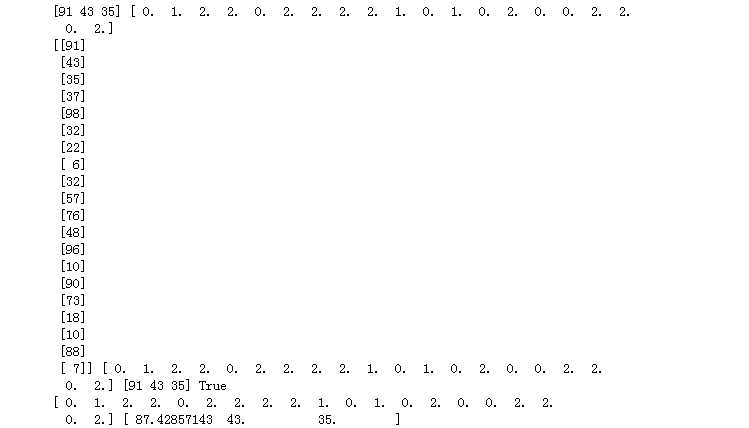
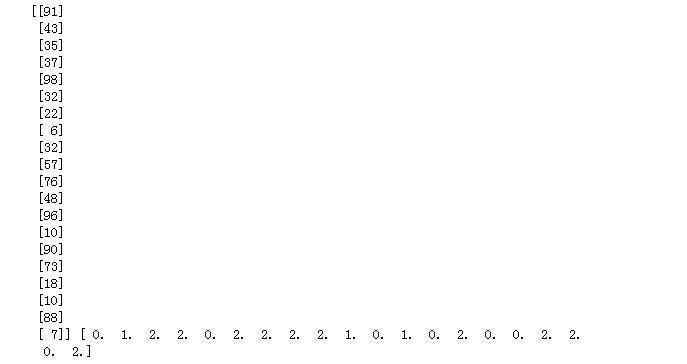
2. 鸢尾花花瓣长度数据做聚类并用散点图显示。
#加载numpy包 import numpy as np #加载sklearn包 from sklearn.datasets import load_iris #读出鸢尾花数据集iris iris=load_iris() x=iris.data[:,1] y=np.zeros(150) #初始聚类中心数组 def initcenter(x,k): return x[0:k].reshape(k) #数组中的值,与聚类中心最新距离所在类别的索引号 def nearest(kc,i): d = (abs(kc - i)) w=np.where(d==np.min(d)) return w[0][0] #计算各聚类新均值 def kcmean(x, y, kc, k): l = list(kc) flag = False for c in range(k): m = np.where(y == c) n = np.mean(x[m]) if l[c] != n: l[c] = n flag = True return (np.array(l), flag) #对数组的每个组分类 def xclassify(x,y,kc): for i in range(x.shape[0]): y[i]=nearest(kc,x[i]) return y k = 3 kc = initcenter(x, k) flag = True print(x, y, kc, flag) while flag: y = xclassify(x, y, kc) kc, flag = kcmean(x, y, kc, k) print(y, kc, type(kc)) import matplotlib.pyplot as plt plt.scatter(x,x,c=y,s=50,cmap=‘rainbow‘,marker=‘p‘,alpha=0.5) plt.show()
运行结果如下:
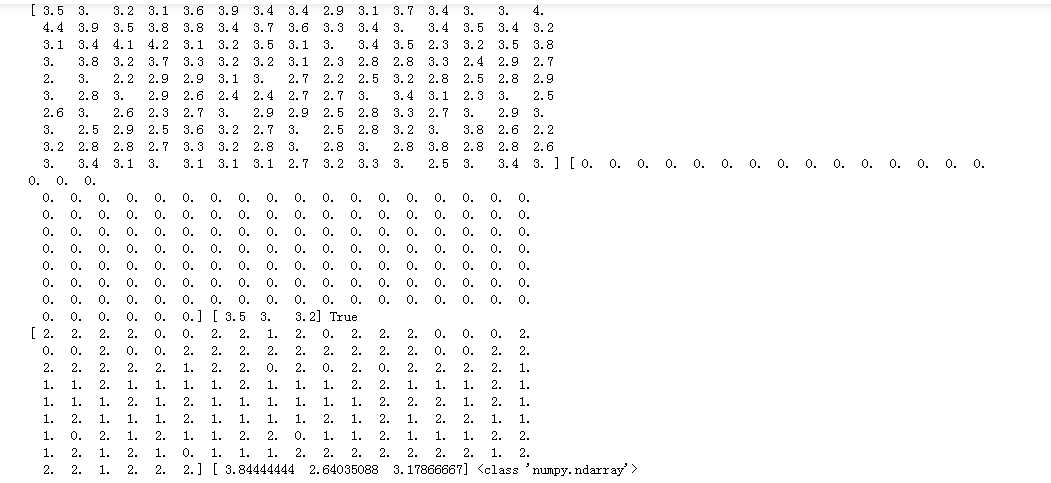
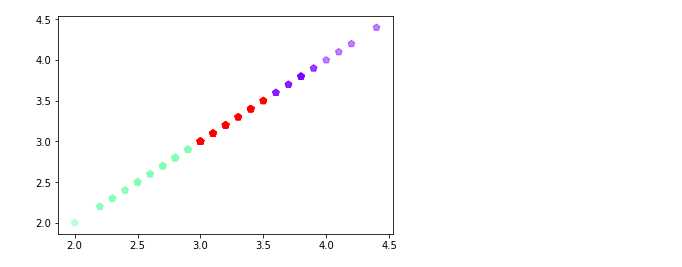
3. 用sklearn.cluster.KMeans,鸢尾花花瓣长度数据做聚类并用散点图显示.
import numpy as np from sklearn.cluster import KMeans from sklearn.datasets import load_iris import matplotlib.pyplot as plt iris= load_iris() x=iris.data petal_length = x[:, 2:3] print(petal_length) est = KMeans(n_clusters=3) est.fit(petal_length) kc = est.cluster_centers_ y_kmeans = est.predict(petal_length) print(y_kmeans,kc) print(kc.shape,y_kmeans.shape,np.shape) plt.scatter(petal_length,np.linspace(1,150,150),c=y_kmeans,marker=‘o‘,cmap=‘rainbow‘) plt.show()
运行结果如下:
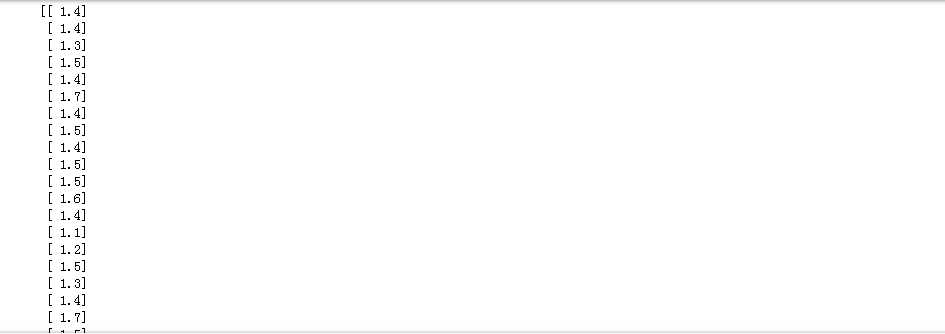

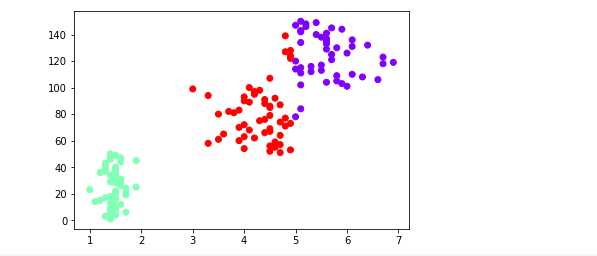
4. 鸢尾花完整数据做聚类并用散点图显示。
import matplotlib.pyplot as plt import numpy as np from sklearn.datasets import load_iris from sklearn.cluster import KMeans iris=load_iris() x=iris.data est = KMeans(n_clusters = 3) est.fit(x) kc = est.cluster_centers_ y_kmeans = est.predict(x) print(y_kmeans,kc) print(kc.shape,y_kmeans.shape,np.shape) plt.scatter(x[:,0],x[:,1],c=y_kmeans,s=50,cmap=‘rainbow‘); plt.show()
运行结果如下:
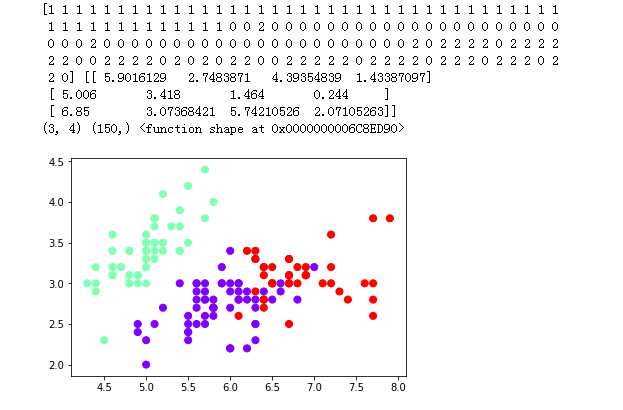
以上是关于聚类--K均值算法:自主实现与sklearn.cluster.KMeans调用的主要内容,如果未能解决你的问题,请参考以下文章